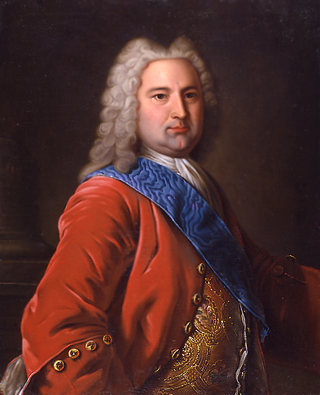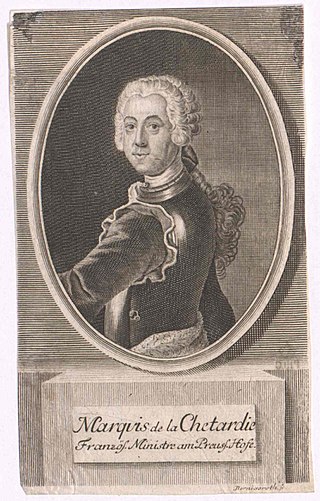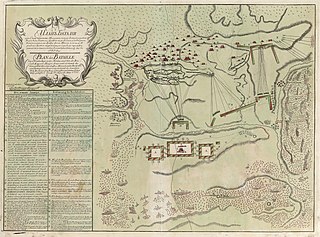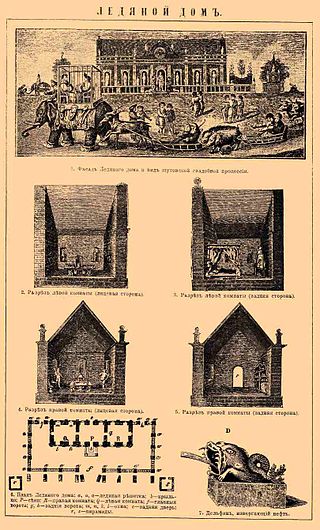| Years in Russia: | 1736 1737 1738 1739 1740 1741 1742 |
| Centuries: | 17th century · 18th century · 19th century |
| Decades: | 1700s 1710s 1720s 1730s 1740s 1750s 1760s |
| Years: | 1736 1737 1738 1739 1740 1741 1742 |

Events from the year 1739 in Russia
| Years in Russia: | 1736 1737 1738 1739 1740 1741 1742 |
| Centuries: | 17th century · 18th century · 19th century |
| Decades: | 1700s 1710s 1720s 1730s 1740s 1750s 1760s |
| Years: | 1736 1737 1738 1739 1740 1741 1742 |

Events from the year 1739 in Russia
| | This section needs expansion. You can help by adding to it. (October 2015) |
| | This section needs expansion. You can help by adding to it. (October 2015) |
| | This section needs expansion. You can help by adding to it. (October 2015) |

Anna Ioannovna, also russified as Anna Ivanovna and sometimes anglicized as Anne, served as regent of the duchy of Courland from 1711 until 1730 and then ruled as Empress of Russia from 1730 to 1740. Much of her administration was defined or heavily influenced by actions set in motion by her uncle, Peter the Great, such as the lavish building projects in St. Petersburg, funding the Russian Academy of Science, and measures which generally favored the nobility, such as the repeal of a primogeniture law in 1730. In the West, Anna's reign was traditionally viewed as a continuation of the transition from the old Muscovy ways to the European court envisioned by Peter the Great. Within Russia, Anna's reign is often referred to as a "dark era".

Ernst Johann von Biron was a Duke of Courland and Semigallia and briefly regent of the Russian Empire in 1740.

Anna Leopoldovna, born Elisabeth Katharina Christine von Mecklenburg-Schwerin and also known as Anna Carlovna, was regent of Russia for just over a year (1740–1741) during the minority of her infant son Emperor Ivan VI.
An ice palace or ice castle is a castle-like structure made of blocks of ice. These blocks are usually harvested from nearby rivers or lakes when they become frozen in winter. The first known ice palace appeared in St. Petersburg, Russia, when Anna Ivanovna, Empress of Russia, commissioned an ice palace in St. Petersburg, Russia, during the winter of 1739–40. Architect Piotr Eropkin and scientist Georg Wolfgang Krafft used huge ice blocks measuring 16 m (52 ft) long by 5 m (16 ft) wide, joined together with frozen water, to build the palace. The city recreates the ice palace every winter.

A lady's maid is a female personal attendant who waits on her female employer. The role of a lady's maid is similar to that of a gentleman's valet.

Charles Frederick, Duke of Schleswig-Holstein-Gottorp was a Prince of Sweden and Duke of Schleswig-Holstein-Gottorp and an important member of European royalty. His dynasty, the Dukes of Schleswig-Holstein-Gottorp, were a cadet branch of the ancient House of Oldenburg, which at that time was ruling Denmark-Norway. His mother was a sister of Charles XII of Sweden. Charles Frederick married a daughter of Peter the Great and became the father of the future Peter III of Russia. As such, he is the progenitor of the Russian imperial house of Holstein-Gottorp-Romanov and the patrilineal ancestor of all Russian emperors starting with Peter III, except for Catherine II.

Grand Duchess Anna Petrovna of Russia was the eldest daughter of Emperor Peter I of Russia and his wife Empress Catherine I. Her younger sister, Empress Elizabeth, ruled between 1741 and 1762. While a potential heir in the reign of her nephew Peter II, she never acceded to the throne due to political reasons. However, her son Peter III became Emperor in 1762, succeeding Elizabeth. She was the Duchess Consort of Holstein-Gottorp by marriage. She was born in Moscow and died in Kiel in her youth, at the age of 20.

Jacques-Joachim Trotti, marquis de La Chétardie was a French diplomat who engineered the coup d'etat that brought Elizaveta Petrovna to the Russian throne in 1741. In the course of his eventful career, La Chetardie was sent on diplomatic errands throughout Europe: in London (1727), then in Holland and Prussia, in Russia twice, and finally in Turin in 1749 in the company of Jean-Louis Favier.

The Battle of Stavuchany was a battle between the Russian and Ottoman armies, which took place on August 17(28) of 1739 during the Russo-Turkish War of 1735-1739.
Iliaș Colceag was a Moldavian mercenary and military commander in the Ottoman and Russian Empire.
Events from the year 1736 in Russia

Events from the year 1735 in Russia
Events from the year 1732 in Russia

Events from the year 1730 in Russia
Events from the year 1740 in Russia
Events from the year 1731 in Russia

Prince Alexander Borisovich Kurakin was a statesman and diplomat from the Kurakin family: an Active Privy Councillor, the Ober-Stallmeister (1736), a senator.

Count Piotr Grigoryevich Chernyshev was a Russian Imperial nobleman, diplomat, privy counsellor, chamberlain, and senator.
Events from the year 1742 in Russia

The Ice House was an palace built of ice in the winter of 1739–40 in Saint Petersburg, Russia. The palace and the surrounding festivities were part of the celebration of Russia's victory over the Ottoman Empire. The Empress Anna Ivanovna ordered Alexis Tatishchev, a court functionary, to construct it on the river Neva between the Admiralty and the Winter Palace during the bitterly cold winter of 1739-40. It was 80 feet long, 33 feet high, and 23 feet deep, and cost 30,000 rubles. By June of 1740, the palace had melted into mere blocks of ice floating in the river.
![]() Media related to 1739 in Russia at Wikimedia Commons
Media related to 1739 in Russia at Wikimedia Commons